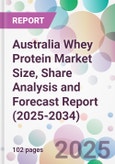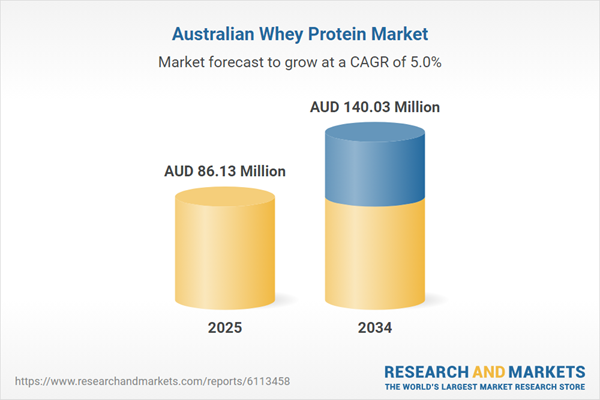Based on type, the Australia whey protein market share is driven by whey protein isolates due to their high protein content and fast digestion and absorption.
Individuals or fitness enthusiasts consume high-quality protein supplements which help in training, recovery, and overall health benefits. It provides additional nutrients, rapid digestion and high protein content which prioritize their protein intake and acts as a convenient and effective protein source.
The increasing fitness and health awareness among individuals led to the increasing consumption of proteins which indicate the Australia whey protein market growth. Individuals prioritize sports or physical activities for their healthy lifestyles enabling them to consume whey protein to increase their protein intake.
As per the Australian Bureau of Statistics, 76.8% of Australian individuals aged between 25 and 34 did physical activity, thus boosting the demand of Australia whey protein market.
This report offers a detailed analysis of the market based on the following segments:
Market Breakup by Type
- Whey Protein Concentrate
- Whey Protein Isolates
- Whey Protein Hydrolysate
- Others
Market Breakup by Application
- Sports and Performance Nutrition
- Functional/Fortified Food
- Others
Market Breakup by Region
- New South Wales
- Victoria
- Queensland
- Australian Capital Territory
- Western Australia
- Others
Australia Whey Protein Market Share
Whey protein is predominantly used in the sports and performance nutrition sector. Athletes, fitness enthusiasts, and individuals engaged in physical training often consume whey protein supplements to support muscle growth, repair, and recovery. Whey protein is valued for its high biological value, containing essential amino acids that aid in muscle protein synthesis. It is commonly consumed as a post-workout supplement to replenish nutrients and promote muscle recovery.Leading Companies in the Australia Whey Protein Market
The growth of the whey protein market is fuelled by increasing sports or physical activity which creates an increasing demand for whey protein for individuals with balanced nutrition and protein consumption.- Glanbia Plc
- Bioflex Nutrition Pty Ltd
- Stillone Investment Group Pty Ltd
- Saputo Dairy Australia Pty Ltd
- Fonterra Co-operative Group Limited
- Ausphex Pty Ltd.
- Integrity Food Co.
- Noumi Trading Pty Ltd.
- Others
Table of Contents
Companies Mentioned
- Glanbia Plc
- Bioflex Nutrition Pty Ltd.
- Stillone Investment Group Pty Ltd.
- Saputo Dairy Australia Pty Ltd
- Fonterra Co-operative Group Limited
- Ausphex Pty Ltd.
- Integrity Food Co.
- Noumi Trading Pty Ltd.
Table Information
| Report Attribute | Details |
|---|---|
| No. of Pages | 102 |
| Published | October 2025 |
| Forecast Period | 2025 - 2034 |
| Estimated Market Value ( AUD | $ 86.13 Million |
| Forecasted Market Value ( AUD | $ 140.03 Million |
| Compound Annual Growth Rate | 4.9% |
| Regions Covered | Australia |
| No. of Companies Mentioned | 8 |









